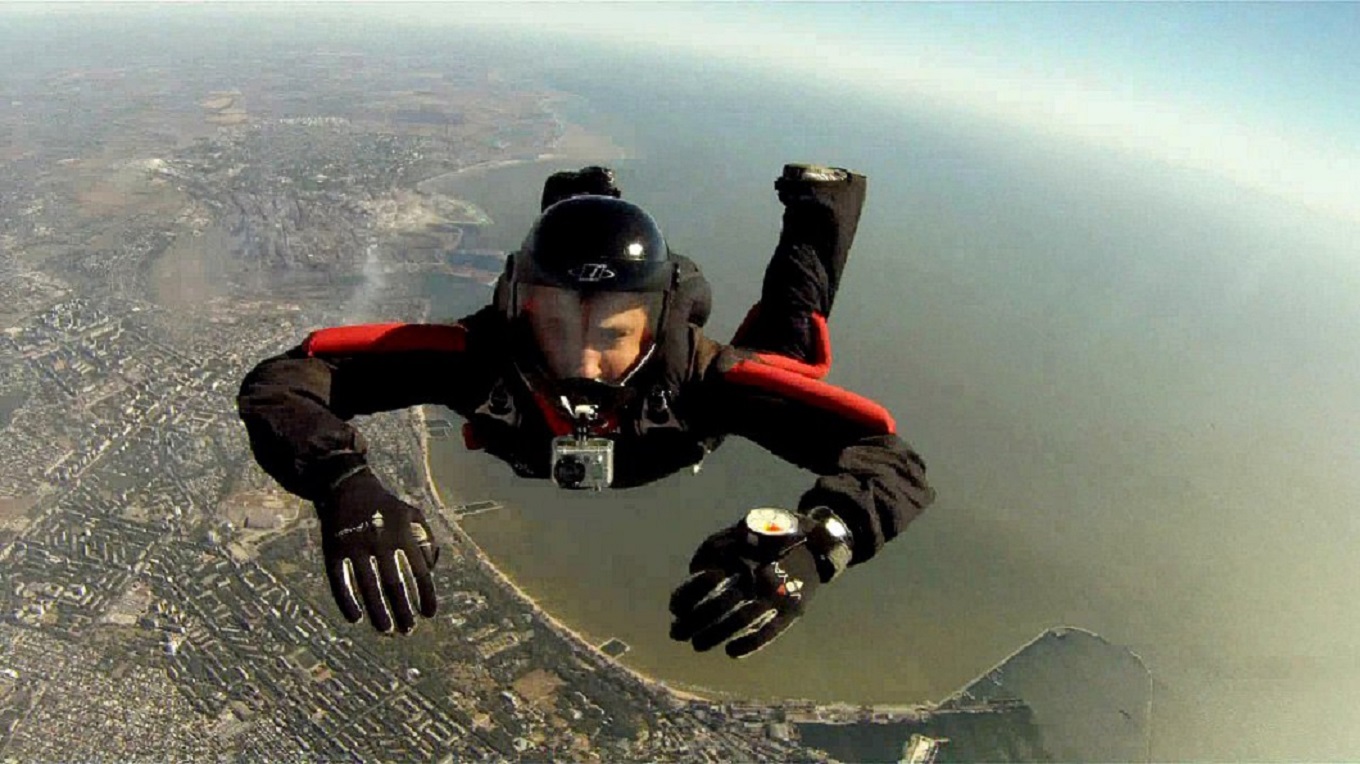|
Cross-country Jump
A cross-country jump refers to a style of skydive where the participants open their parachutes immediately after jumping, with the intention of covering as much ground under canopy as possible. A cross-country jump is typically planned when the upper winds are strong, allowing the parachutists to cover larger distances. There are two variations of a cross-country jump: The most popular one is to plan the exit point upwind of the drop zone. A map and information about the wind Wind is the natural movement of air or other gases relative to a planet's surface. Winds occur on a range of scales, from thunderstorm flows lasting tens of minutes, to local breezes generated by heating of land surfaces and lasting a few ... direction and velocity at different altitudes are used to determine the exit point. This is usually set at a distance from where all the participants should be able to fly back to the drop zone. The other variation is to jump out directly above the drop ... [...More Info...] [...Related Items...] OR: [Wikipedia] [Google] [Baidu] |
Skydive
Parachuting, including also skydiving, is a method of transiting from a high point in the atmosphere to the surface of Earth with the aid of gravity, involving the control of speed during the descent using a parachute or parachutes. For human skydiving, it may involve a phase of more or less free-falling (the skydiving segment) which is a period when the parachute has not yet been deployed and the body gradually accelerates to terminal velocity. For cargo parachuting, the parachute descent may begin immediately, such as a parachute-airdrop in the lower atmosphere of Earth, or be significantly delayed, such as in a planetary atmosphere where an object is descending "under parachute" following atmospheric entry from space, and may begin only after the hypersonic entry phase and initial deceleration that occurs due to friction with the thin upper atmosphere. History Common uses Parachuting is performed as a recreational activity and a competitive sport, and is widel ... [...More Info...] [...Related Items...] OR: [Wikipedia] [Google] [Baidu] |
Parachute
A parachute is a device used to slow the motion of an object through an atmosphere by creating drag or, in a ram-air parachute, aerodynamic lift. A major application is to support people, for recreation or as a safety device for aviators, who can exit from an aircraft at height and descend safely to earth. A parachute is usually made of a light, strong fabric. Early parachutes were made of silk. The most common fabric today is nylon. A parachute's canopy is typically dome-shaped, but some are rectangles, inverted domes, and other shapes. A variety of loads are attached to parachutes, including people, food, equipment, space capsules, and bombs. History Middle Ages In 852, in Córdoba, Spain, the Moorish man Armen Firman attempted unsuccessfully to fly by jumping from a tower while wearing a large cloak. It was recorded that "there was enough air in the folds of his cloak to prevent great injury when he reached the ground." Early Renaissance The earliest eviden ... [...More Info...] [...Related Items...] OR: [Wikipedia] [Google] [Baidu] |
Drop Zone
A drop zone (DZ) is a place where parachutists or parachuted supplies land. It can be an area targeted for landing by paratroopers, or a base from which recreational parachutists and skydivers take off in aircraft and land under parachutes. In the latter case, it is often beside a small airport, frequently sharing the facility with other general aviation General aviation (GA) is defined by the International Civil Aviation Organization (ICAO) as all civil aviation aircraft operations with the exception of commercial air transport or aerial work, which is defined as specialized aviation services .... At recreational drop zones, an area is generally set side for parachute landings. Personnel at the site may include a drop zone operator or owner (DZO), manifestors (who maintain the flight manifest documents defining who flies and when), pilots, instructors or coaches, camera operators, parachute packers and riggers, and other general staff. History The concept of a drop ... [...More Info...] [...Related Items...] OR: [Wikipedia] [Google] [Baidu] |
Wind
Wind is the natural movement of air or other gases relative to a planet's surface. Winds occur on a range of scales, from thunderstorm flows lasting tens of minutes, to local breezes generated by heating of land surfaces and lasting a few hours, to global winds resulting from the difference in absorption of solar energy between the climate zones on Earth. The two main causes of large-scale atmospheric circulation are the differential heating between the equator and the poles, and the rotation of the planet (Coriolis effect). Within the tropics and subtropics, thermal low circulations over terrain and high plateaus can drive monsoon circulations. In coastal areas the sea breeze/land breeze cycle can define local winds; in areas that have variable terrain, mountain and valley breezes can prevail. Winds are commonly classified by their spatial scale, their speed and direction, the forces that cause them, the regions in which they occur, and their effect. Winds have vario ... [...More Info...] [...Related Items...] OR: [Wikipedia] [Google] [Baidu] |



